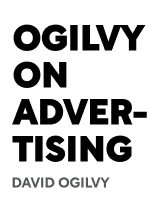

This article is an excerpt from the Shortform book guide to "Ogilvy On Advertising" by David Ogilvy. Shortform has the world's best summaries and analyses of books you should be reading.
Like this article? Sign up for a free trial here .
What is travel advertising? How is travel advertising different from regular advertising?
Travel advertising is a type of advertising that intends to draw foreign travelers to a destination. Travel advertising poses several unique challenges.
Read more about travel advertising and how it works.
Travel Advertising
Like corporate advertising, advertising travel to foreign countries requires navigating some specific pitfalls and opportunities. Vacation ads are needed for their industry, but it can be hard to make them effective.
Travel advertising has the following challenges:
Challenge #1: Politics. Advertising travel can be fraught with politics because often the country that’s being advertised wants to present a different image than what tourists are most interested in.
- Travel ads example: When Ogilvy was advertising Britain to American tourists, his research found that Americans were most interested in culture and history. To entice them, he created ads that showed Westminster Abbey and the Changing of the Guard. However, the British press criticized the ads for presenting the country as behind the times—they would have preferred to see new nuclear power stations in the advertising.
Challenge #2: Underfunding. Even though tourism is a huge source of income for many countries, often tourism departments aren’t given a large enough budget to operate effectively.
Challenge #3: Misconceptions. Some places have negative connotations or stereotypes associated with them. Often these are inaccurate, so the advertising must show the place as it really is to overcome these preconceptions.
- Travel ads example: In the past, Americans who had never been to Puerto Rico thought it was squalid. Ogilvy’s advertisements showed that in reality, the region was beautiful.
To create effective travel advertising:
Tip #1: Advertise exclusivity. Feature attractions that don’t exist in the country being targeted by the ads.
- (Shortform example: If you’re advertising Switzerland to Canadians, don’t tell them about ski resorts, tell them about the medieval-era attractions.)
Tip #2: Target the type of tourists the country wants. Some countries are rightly concerned that increasing tourism will affect their culture.
- Travel ads example: Bermuda targeted its ads at young American couples. Had it been less specific, it could have attracted all sorts of tourists and turned into an overcrowded Miami Beach.
Tip #3: Feature culture. Most travelers are educated and interested in culture.
Tip #4: Provide instructions, especially for less well-known countries.
- For example, when advertising Singapore, Ogilvy’s ad featured an appealing photo and information about how much it cost to travel there, the weather, the food, and so on.
Tip #5: Soothe fears. After cost, fear is the main reason people choose not to travel. In your ads, reassure people that they will be able to communicate, the country is safe, the locals are nice, and the food isn’t too unusual.
Tip #6: Be strategically timeless or newsworthy. Most travel advertisements should be timeless, but there are cases where newsworthiness can be effective.
- Vacation ads example: In 1974, there were electricity shortages in Britain, which discouraged Americans from visiting. When the shortages ended, Ogilvy reported this news in ads (the press didn’t report it at all), and people were no longer anxious about traveling to Britain.
Tip #7: Position the country as a trend. People tend to travel according to fashion.
- (Shortform example: Use a headline like, “The island everyone’s visiting in 2005.”)
Tip #8: Use both magazine and TV advertising.
Tip #9: Use charm or be unique. This will make your ads stand out.
- Vacation ads example: When advertising France, Ogilvy wrote a headline in French (which was very unconventional) with a translation underneath.
Travel advertising is a specific form of advertising that faces many challenges. These tips can help you create effective ads.

———End of Preview———
Like what you just read? Read the rest of the world's best book summary and analysis of David Ogilvy's "Ogilvy On Advertising" at Shortform .
Here's what you'll find in our full Ogilvy On Advertising summary :
- What the "father of advertising" has learned from his decades' of experience
- How to craft easy-to-understand ads that work
- The 6 pioneers of the advertising industry






